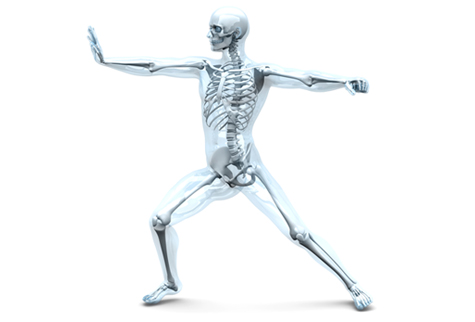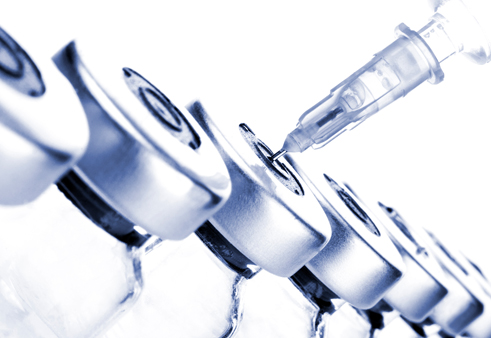
VISCOSUPPLEMENTATION: A SAFE TREATMENT FOR JOINTS CAPABLE OF WITHSTANDING ANY CHALLENGE

Intra-articular hyaluronic acid therapy (or viscosupplementation) consists in injecting a hyaluronic acid-based preparation directly into the cavity of the affected joint.
Injected hyaluronic acid restores the viscoelastic properties of the synovial fluid, the liquid produced by the synovial membrane that coats the joint cavity.
Age, overloads, metabolic abnormalities and trauma can have a negative impact on joint balance, triggering degenerative processes that often become irreversible over time. Basically, the quality and quantity of the hyaluronic acid present in the synovial fluid are altered, thus impairing the ability of the molecule to protect the cartilage through lubrication and the absorption of mechanical stress.
Hymovis® injections ensure rapid and prolonged effects, allowing better management of the various phases of rehabilitation, up to full recovery of the joint’s dynamic movements.
European experts in the field of osteoarthritis agree on the excellent risk-benefit ratio of viscosupplementation. Indeed, they recommend it as a first-line treatment for osteoarthritis, especially in patients with comorbidity, since it allows them to decrease the intake of NSAIDs, and consequently, limit the adverse events associated with these drugs.
Intra-articular injections may only be administered by authorised healthcare professionals and qualified physicians.
Prerequisites for optimal effectiveness

BIOLOGICAL ROLE AND ADVANCED TECHNOLOGY
The biological role of hyaluronic acid, is fundamental to the success of this therapy. This is particularly evident with specific molecular weights and chemical structures.
Hymovis® is a sterile, non-pyrogenic viscoelastic hydrogel with an optimum molecular weight (500-730 kDa). A minimal but sophisticated chemical modification with hexadecylamide, which impacts just 2-3% of the entire molecule, enables it to recover its structure completely, even after repetitive mechanical stress (MO.RE.® Technology), thus maintaining its lubricating properties and prolonged residence time into the joint up to 28 days.
THERAPY PRECISION
Intra-articular injection therapy is a simple treatment that allows hyaluronic acid-based preparations to be injected directly into the affected joint cavity, thereby restoring the physiological hyaluronic acid levels.
Over the last decade, many treatments (some surgical) have been developed to repair joint damage, but none were able to regenerate the hyaline cartilage – which does not regenerate on its own – with all its anatomical and biomechanical characteristics. Among the many therapies currently available, Hymovis® stands out as a next generation hyaluronic acid characterized primarily by an innovative rheological profile. Moreover, it has also been shown that Hymovis® is able to act on the inflammatory parameters that characterize the osteoarthritis process (OLIVIERO et al. 2013).
These features make Hymovis® an innovative product with rheological properties that are very similar to those of the synovial fluid, ensuring proper joint lubrication and cartilage protection against mechanical stress.
IMPORTANT RULES FOR SAFE THERAPY ADMINISTRATION
1°
2°
3°
4°
5°
6°
Clinical experience
It is crucial for the physician to be experienced in administering intra-articular injections and to be fully aware of the indications, contra-indications and dose regimen for every joint.


Patient information
Patients must be informed of the contra-indications and of alternative therapies. To this end, patients should consult with a physician who is authorised to administer intra-articular injections.
What to do after treatment
Patients should follow some simple instructions to ensure optimal injection results.
During treatment, patients should suspend or at least reduce any strenuous or sports activities. Experts recommend a rest period of 12 to 24 hours. During this time, patients may walk slowly, but should avoid activities having a mechanical impact on the joint, such as lifting weights.
Patients may feel a slight burning sensation after the injection; in this case, keep the joint at rest and use an ice bag on the affected area.
Following the injection, it is important to prevent any new trauma. Patients should consider all the risk factors involved, and follow a balanced diet to ensure joint health. It is also advisable to associate an appropriate oral chondroprotection (es. Glucosamine hydrochloride plus Chondroitin sulfate).
Consult your physical therapist to develop a targeted exercise plan to regain mobility and strengthen the muscles around the joint.